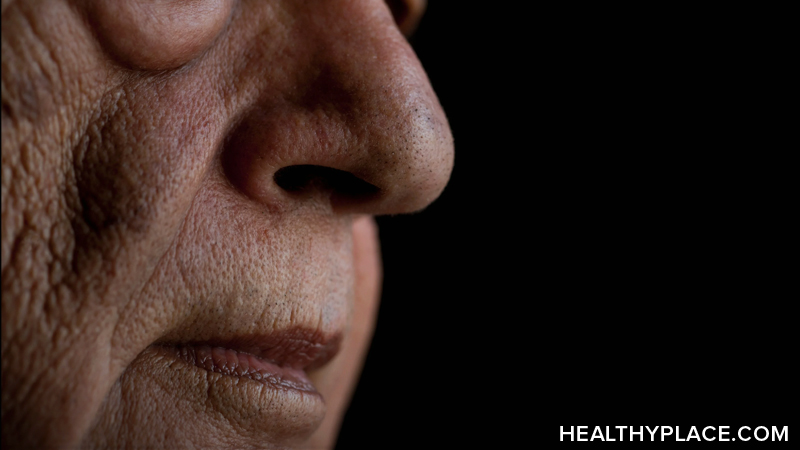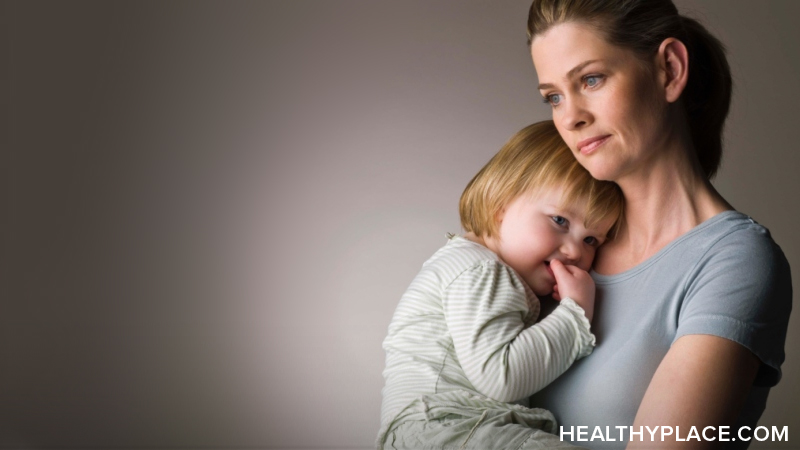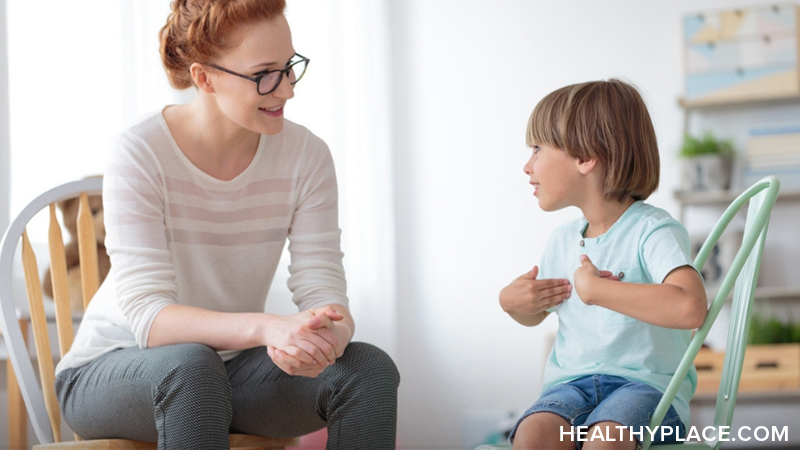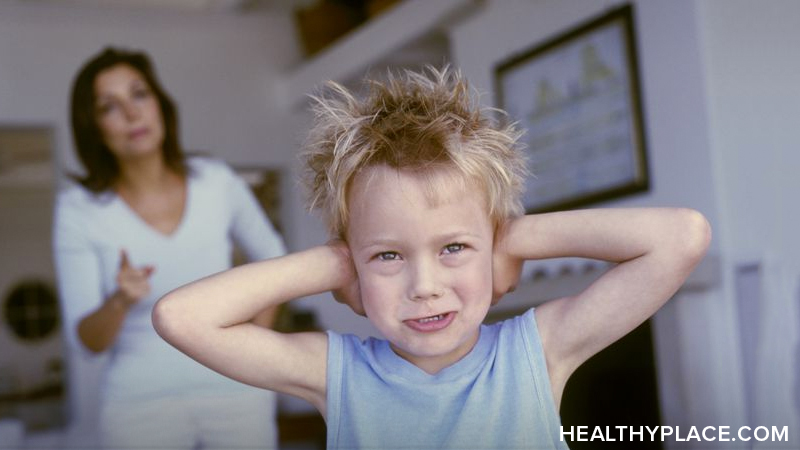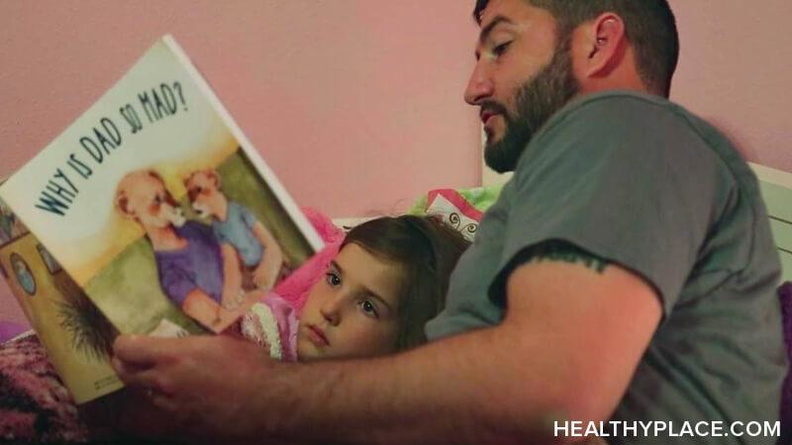
What does it take to be a good father? Find out and learn how to become the father you want to be.
Involvement, influence, and affection: three keys to father-child relationships. Though they may sometimes find it difficult to express their feelings, most fathers care about their children and families.
In a 1980 Gallup poll, six out of ten fathers said their families were "the most important element of my life at this time." Only 8 percent said their families were unimportant to them. When asked what they found most satisfying about their families, fathers rated "children," "closeness," and "being together" as personally important. [1]
This hearty endorsement of family life contradicts some of the traditional roles or popular images of fathers in our society:
The Wallet: This father is preoccupied with providing financial support for his family. He may work long hours to bring home his paycheck and does not take an active part in caring for the children. Making money provides this father with a distraction from family involvement.
The Rock: This is a "tough" father - strict on discipline and in charge of the family. He may also believe that a good father remains emotionally distant from his children, so expressions of affection are taboo.
The Dagwood Bumstead: This father tries to be a "real pal" to his children, but his efforts are often clumsy or extreme. He doesn't understand his children and feels confused about what to do. He may also feel that he is not respected within the family.
These traditional stereotypes are now clashing with another image of a father:
The Caregiver: This father tries to combine toughness with tenderness. He enjoys his children but is not afraid to set firm but fair limits. He and his wife may cooperate in childrearing and homemaking.
This type of father has always been around. But the number of men who choose this role is increasing. Many fathers today recognize that family life can be rewarding and that their children need their involvement.
This shift in roles is influenced by two major social changes: the increase in the number of women working and the rising divorce rate. As more and more mothers join the workforce, fathers are being asked to take on more responsibilities at home. In 1979, 40 percent of the mothers of children under age 3 were employed.[2] Instead of remaining on the fringe of family life, many fathers are helping more with child care and housekeeping.
Fathers are also profoundly influenced by the escalating divorce rate.[3] For every two marriages, there is now one divorce - a tripling of the divorce rate between 1960 and 1980. If they are not directly involved in a divorce, most men have friends who are. They witness the loss their friends have experienced and reexamine the importance of their own family relationships. Remarriage and stepfather-ing are also creating new challenges for many fathers.
Because of these changes in our society, many men are being forced to develop family relationships that are quite different from those they had with their own fathers. They cannot easily fall back on their own childhood experiences for guidance. What worked very well for their fathers 20 or 30 years ago may not work at all with the kinds of challenges fathers face today.
These changes in social attitudes mean that men have more options for meeting their obligations as fathers and husbands. Some men will express their feelings more openly, while others will be more reserved; some will enjoy the companionship and play of very young children, while others will prefer involvement with older sons and daughters. Fathers do not have to try to fit a certain stereotyped pattern.
According to sociologist Lewis Yablonsky, a man's fathering style is influenced by some or all of the following forces: his enthusiasm for being a father, his own father's behavior, the images of how to be a father projected by the mass media, his occupation, his temperament, the way family members relate to each other, and the number of children he has.[4] No single style of fathering or mothering, no matter how ideal it appears, is right for everyone.
Regardless of their personal style, most fathers are interested in having a satisfying relationship with their children. Although they might not be able to put it into words, most fathers know they are important to their children. According to psychotherapist Will Schutz, a good relationship needs three things: involvement, respect and influence, and affection.[5]
Involvement: The Foundation of a Relationship
The first step in any relationship is the feeling by both persons that the other is interested in them and wants to be with them. Many fathers begin to prepare for this kind of relationship before their child is even born. A father who seeks involvement is interested in his wife's pregnancy and makes preparations for the child's birth. When the child is born he is eager to hold the infant. In countless small ways, this father demonstrates involvement - he may gently touch and play with his children, hold and talk to them. By doing these things he sends a clear and emphatic message:
I want to be your father. I am interested in you. I enjoy being with you. You and I have a relationship that is important to me.
Every child wants to sense this type of involvement from his or her father and mother. Without it, a child feels isolated and rejected. The foundation of the relationship crumbles.
What the Research Shows Research on father-child involvement demonstrates that [6]:
(1) Fathers are significant for children;
(2) Fathers are sensitive to children;
(3) Fathers play with children differently than mothers do.
These differences in play continue as the child grows older. Fathers may vigorously bounce and lift a 1- or 2-year-old in rough and tumble physical play; mothers may prefer to play conventional games like "peek-a-boo," offer an interesting toy, or read. Fathers' play appears to be more physically stimulating while mothers are more interested in teaching.
As a result, children seem to prefer fathers as play partners, though in a stressful situation they may be more likely to turn to their mothers. This preference could be due to fathers spending a greater proportion of their time playing with their children than mothers. One researcher noted that about 40 percent of a father's time with his young children was spent in play in contrast to about 25 percent of the mother's time. Even though fathers may spend less total time in play than mothers, their type of play and their apparent interest in that type of involvement make them attractive play partners.
There are, of course, exceptions to this pattern. Some men simply do not enjoy playing with children, and some mothers may prefer an arousing, physical form of child play. Also, when both parents work, the additional demands on the family could affect the amount of time one or both parents spend enjoying their children.
Suggestions for Fathers
How can fathers become more involved with their children? First, they can give each of their children exclusive attention as often as possible. During their time together fathers could enjoy their children's company without allowing outside distractions to interfere. As a result, their children would feel noticed and special. There is no single formula for how this might be accomplished. A father and child might play, talk, learn a skill or read together. What is important is that they notice each other and acknowledge a common interest. This type of undistracted attention promotes a sense that each is important to the other.
Fathers might also give their children a glimpse of their work world. Children want to know what life is like outside the home and what their parents do at work. Many farm families and small businesses include their children in the operation at an early age. Parents in other occupations may find it more difficult to give their children a glimpse of their work, but even brief visits or tours will help. Business and industry are gradually beginning to acknowledge that many workers are parents too, and that adjustment in this role can have a positive effect on work performance. Some industries provide day care centers for children of their employees. Both mothers and fathers are able to visit their children during breaks.
Influence. Building the Relationship
Once involvement is established in a relationship, influence is the next step. Each person wants to feel that what he or she says or wants is important to the other. Each wants to be listened to and included in discussions and decisions. This sense of personal power promotes feelings of self-worth and respect for the other person.
Influence is an important issue in parent-child relationships. Fathers, as well as mothers, want their children to listen to them and to obey their limits. Occasionally parents have to exert control over their children's behavior. They may allow no debate over whether a child can stick gum on furniture, play with matches, or sit on the car while someone is underneath changing the oil.
While parents have to be reasonably firm at times, there are occasions when they might yield to their children's wishes and grant permission for safe, enjoyable activities.
Giving children privacy, letting them choose their own clothes, and allowing them to make their own purchases with their allowances are examples of giving influence to children.
When they show respect for their children's wishes but also set and maintain reasonable limits, parents send another clear and emphatic message:
I care enough about you to provide you with the guidance you must have to grow up to be a happy and responsible person. I will use my strength to protect and nurture you. But I am also interested in what you think is important for yourself. I will gradually let you make more and more decisions on your own so that by the time you reach adulthood, you will be able to carefully for yourself. I respect you, and I know I am worthy of your respect.
Children want their parents to be strong. They need to feel protected from a sometimes threatening world and from their own immaturity and loss of control. But they do not want to be overwhelmed by their parents' dominance. For their own self-respect, children need a measure of personal influence.
What the Research Shows
Research on father-child influence demonstrates that:
(1) Children typically have viewed fathers as more rigid, threatening, and demanding than mothers.
(2) Fathers usually are stricter than mothers and more likely to punish children, but mothers may use a wider variety of punishments.
(3) Mothers who take authority in decision-making in the home seem to have a marked effect on boys, lowering their sons' tendency to imitate their fathers and thus their masculine orientation. Father-dominance, on the other hand, does not lower the femininity of girls.
(4) Fathers' involvement in setting limits and making decisions increases their influence in the family, especially with their sons.
(5) Moral judgment is at a low level in boys and girls who view their father's control as overly dominant.
(6) Children may experience personal problems and difficulty in school if they are frequently dominated and punished by their fathers.
(7) Delinquent boys are likely to have fathers who are controlling, rigid, and prone to alcoholism. These fathers may use physical punishment as a form of discipline, and they tend to be inconsistent and erratic in their childrearing techniques.
Suggestions for Fathers
Children both admire and fear their father's strength. On one hand they want their father to be strong and powerful (in the sense of being self-confident and determined) but they may also be frightened at times by that power. Walking the middle ground between dominance and permissiveness can sometimes be difficult for a father. How can fathers establish a sense of influence? First, they can establish and maintain reasonable limits for their children.[7] Children respect parents who provide firm but gentle guidance. But they also benefit from parents who gradually allow them to make decisions on their own.
Fathers could also be responsive to their children's interests. Instead of always telling them what to do, fathers could listen and be responsive to their children's suggestions whenever possible. When shopping, for example, a father might let his 5-year-old choose one or two stores to visit. Similarly, a father might ask his son or daughter to suggest a game to play or a movie to see.
There are times, though, when children do not have these kinds of choices. Parents often have to have the final word. The goal might be to achieve an appropriate balance of influence in the relationship.
Affection: The Relationship Deepens
When people feel accepted and respected in a relationship, they will begin to develop close feelings of mutual affection. Parents who are never involved with their children and are either too permissive or too dominant are not likely to become close to their children. Fathers who expect to be constantly vigilant disciplinarians who show no tenderness create a climate of coldness that puts distance in their relationships. Sometimes the effect can be painful. Following a presentation to a community group, the speaker was approached by a man who wanted to ask a question about his adult son. He said that he and his boy had never been close. He was, in his words, the typical busy father who disciplined his kids but didn't show them much affection. Not long ago he suffered a heart attack and was not expected to live. When his son visited him in the hospital room they experienced a moment of intimacy that the father found deeply rewarding. For the first time in their lives both men expressed their love for each other. The words, "I love you, Dad" meant a great deal to this very sick father. Following his recovery, however, he realized he was gradually slipping back into his old patterns of coldness and isolation.
"How can we tell each other about our good feelings?" he asked. The threat of death made this man more aware of the emptiness that existed between him and his son. He was struggling with the idea that although change would be difficult there was hope if he was willing to take risks and make the effort.
By expressing affection through words and deeds, parents send another clear and emphatic message to their children:
I want to be close to you; I love you. You are special to me. I am willing to share myself so you can get to know me better. You give me joy.
In our closest relationships, we seek these bonds of affection. Talking about these feelings has traditionally been easier for women than for men, but, like the father in the previous example, men are beginning to acknowledge the importance of intimacy and affection. They also are more willing to express the softer, gentler side of themselves.
What the Research Shows
Research on father-child affection demonstrates that:
(1) Generosity in preschool boys was more likely when they viewed their fathers as nurturant, affectionate, and comforting.
(2) Altruism in children grades 3 to 6 was more likely when their fathers participated in caring for them during infancy.
(3) Loving fathers who provide reasonable, firm guidance without arbitrarily imposing their will promote competence in their children. Unloving, punitive, authoritarian fathers tend to produce dependent, withdrawn, anxious, and dejected children.
(4) Warm, accepting fathers tend to have children with high self-esteem. Alienated adolescents view their parents as hostile and nonaccepting.
(5) Warm, affectionate fathers influence the development of their children's sex-role behavior; they also have a positive influence on achievement and peer popularity in boys and personal adjustment in girls.
(6) Adolescent daughters recalled less affection and support from their fathers than the fathers recalled expressing. Daughters wished they had received, and fathers wished they had given, more affection and support.[8]
(7) Adolescent boys who thought they were similar to their fathers were likely to be popular with their peers.
(8) Adolescent boys were more likely to be similar to their fathers when the fathers were perceived as rewarding, gratifying, and understanding. These same boys usually scored high on the masculinity scale of the questionnaire.
(9) Mothers are more interested in the nursing and care of newborns when fathers are emotionally supportive.
Suggestions for Fathers
A parent-child relationship might be compared to a bank account. Every negative act - a frown, a slap, a "no" or "I'm busy" - is like a withdrawal from the account. In contrast, affectionate, caring actions are like deposits in the relationship account. If the withdrawals exceed the deposits, the relationship breaks down into mutual distrust and isolation - it becomes bankrupt. Fathers who have to make a large number of withdrawals can do so if their deposits of warmth, support and nurturance are high enough. Fathers can be both tough when necessary and tender when needed. Tenderness can be difficult for some fathers because of its association with sexuality. One expectant father was concerned that he could have difficulty expressing affection if he had a son. He thought he might feel uncomfortable kissing and hugging a little boy. As it turned out, a son was born and he and his father are affectionate and close. The new father felt no hesitancy about expressing his feelings. Some fathers may become uncomfortable with expressing affection to adolescent daughters. This unfortunate association of affection with sexuality can deprive people of the closeness they deeply need in their relationships.
There are many ways in which men can express their affection for their children. Some may feel comfortable talking with their children. Others may let their actions reveal their feelings. Some expressions, like hugging, are obvious while others, like quiet self-sacrifice, are more subtle. There is a danger in letting our actions speak for themselves: subtle forms of affection can easily be overlooked or misinterpreted. Words can enrich what we do by making our actions more easily understood by others. Children sometimes need to hear their father say "I love you" to fully appreciate what he does for them. On the other hand, words not backed by action may sound hollow and false. Every father will develop his own style of showing affection in his relationships with others in his family.
Few events will change a man's life as much as becoming a father. Being a father can be both frightening and frustrating. For many fathers, nothing makes them angrier than a defiant, stubborn child. Being entrusted with the responsibility for the care of another person can be an awesome task. But the opposite can also be true. Nothing may give a father more pleasure than to see his children gradually grow into adulthood, to have his affection returned in good measure and to have his deepest feelings of self-worth confirmed. Regardless of the mask they sometimes wear, whether it be one of casual aloofness or macho toughness, fathers' feelings for and about their children run deep. Fathers care.
References
1. The Gallup Organization, "American Families - 1980," Princeton, New Jersey.
2. U.S. Department of Labor, "Working Mothers and Their Children," Washington, D.C.: U.S. Government Printing Office, 1979.
3. U.S. Department of Commerce, Bureau of the Census, "Current Population Reports," October 1981.
4. Lewis Yablonsky, Fathers and Sons (New York: Simon and Schuster, 1982).
5. William Schutz, Profound Simplicity (New York: Bantam Books, 1979).
6. The research conclusions identified in this publication were selected from the following books: Michael Lamb, The Role of the Father in Child Development (New York: John Wiley, 1981); David B. Lynn, The Father: His Role in Child Development (Monterey, CA: Brooks/Cole, 1974); Ross D. Parke, Fathers (Cambridge: Harvard University Press, 1981).
7. Charles A. Smith, Effective Discipline (Manhattan, KS: Cooperative Extension Service, 1979/1980). Ask for publication numbers C-604, C-604a and C-621.
8. My thanks to Dorothy Martin, Extension Family Life Specialist in Colorado, for sharing the results of her study titled, "The Expressive Domain of the Father - Adolescent Daughter Relationship Defined by Their Perceptions and Desires." Available from Dissertation Abstracts International, Vol. XXXIX, Number 11, 1979.
Reprinted with permission from the National Network for Child Care -
NNCC. Smith, C. A. (1982). *Father's care*. [Extension Publication L-650] Manhattan, KS. Kansas State University Cooperative Extension Service.


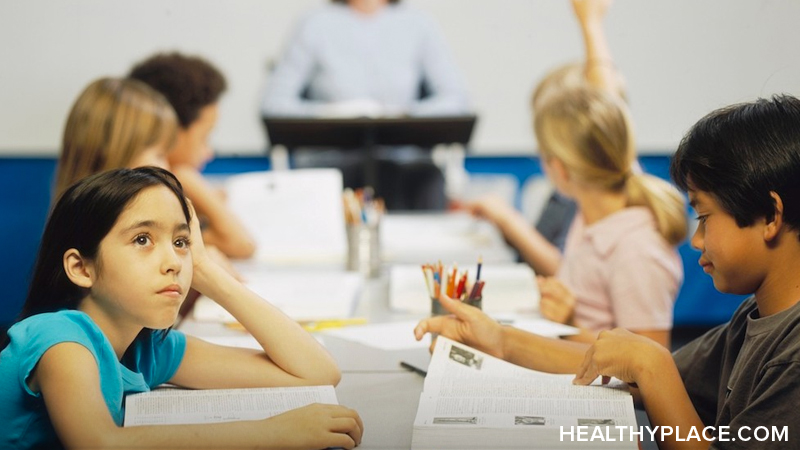
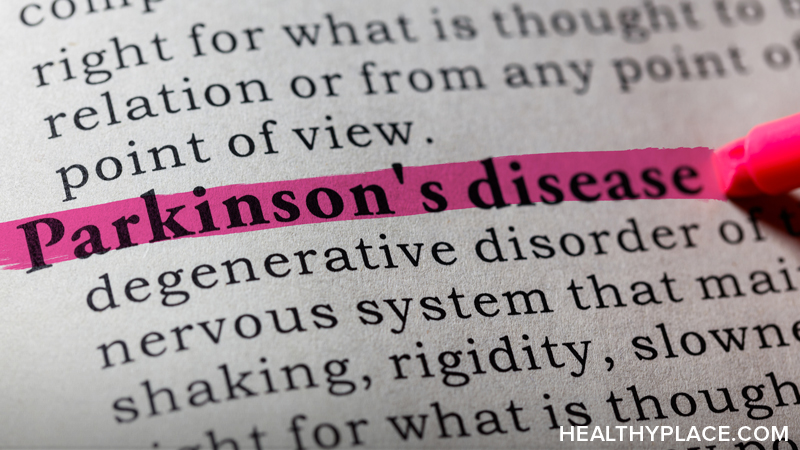
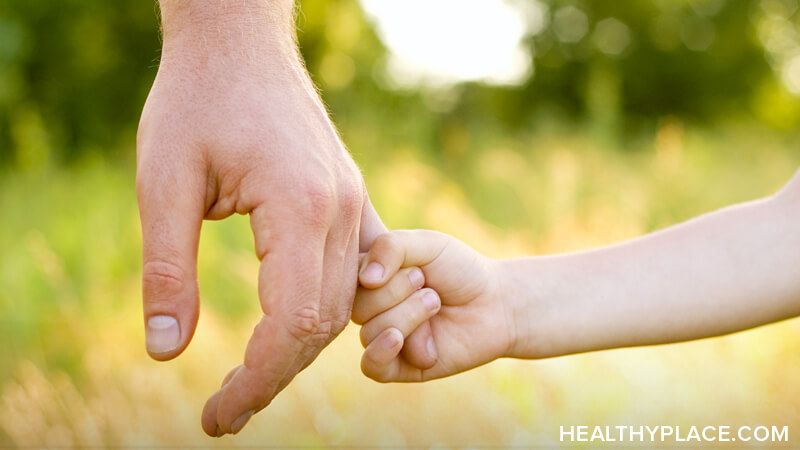 The changing relationship between father and son and putting the father-son relationship in perspective as the years progress.
The changing relationship between father and son and putting the father-son relationship in perspective as the years progress.